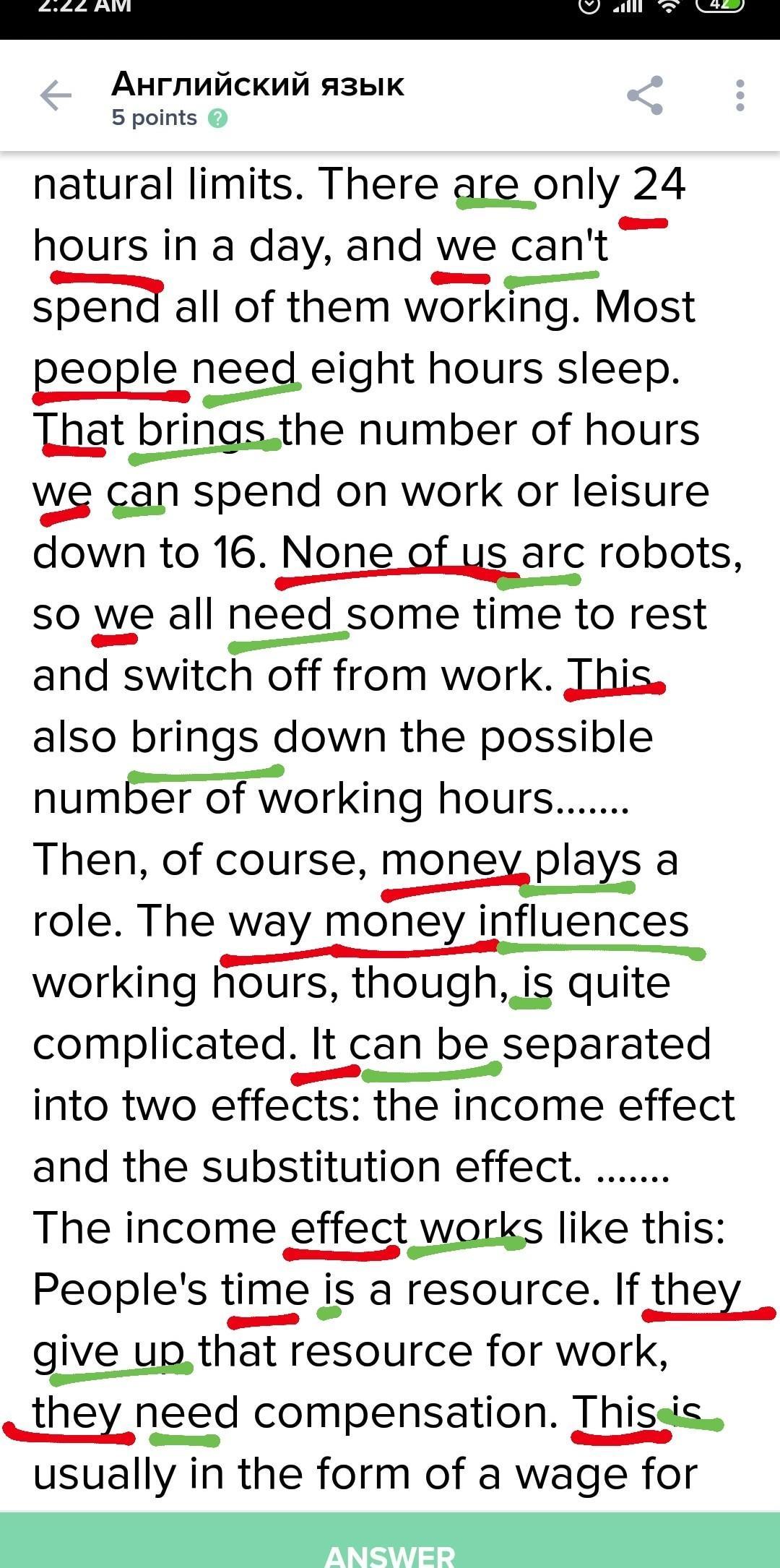Скопируйте текст Supply of labour . Определите в предложениях подлежащие-выделите их красным цветом , сказуемые -зелёным Supply of labour . Why do people work? To make money, of course. However, nothing in economies is ever that simple. The economist will ask a further question: how much arc people prepared to work? The answer to this question is much more complex. Finding the right balance between work time and leisure time is one of the trade-offs we have to make in life. The balance each person chooses depends on a number of things ......... First of all, there are natural limits. There are only 24 hours in a day, and we can't spend all of them working. Most people need eight hours sleep. That brings the number of hours we can spend on work or leisure down to 16. None of us arc robots, so we all need some time to rest and switch off from work. This also brings down the possible number of working hours....... Then, of course, money plays a role. The way money influences working hours, though, is quite complicated. It can be separated into two effects: the income effect and the substitution effect. ....... The income effect works like this: People's time is a resource. If they give up that resource for work, they need compensation. This is usually in the form of a wage for hours worked. The more compensation they get for each hour worked, the less they will need to work. People with higher rates of pay (wages) can afford to have more leisure time than people on lower ratevS of pay. ......... So far, so good. However, are people happy just sitting at home and enjoying themselves? It depends on what they'll lose. In other words, it depends on the opportunity cost of not working. As the hourly rate for work increases, the cost of not working also increases. This means that as the wage rate increases, people want to work more hours. This is called the substitution effect. But the substitution effect also has a limit. Eventually, people will not work more hours, no matter how good the compensation is........ A good wage rate clearly attracts more workers, and encourages them to work longer hours. However, the strength of this relationship depends on how elastic the labour supply is, Sometimes it is difficult for companies to fmd a certain kind of worker. Perhaps there are not many people with the necessary skills. Or perhaps the company is in a place where there are not many available workers. In these situations, even if employers double the wage rate, they will only attract a small number of extra workers. The labour supply is inelastic. In the opposite situation, when it is easy for companies to find workers, the labour supply becomes elastic.
Ответы
Ответ дал:
1
короче говоря, могут быть ошибки, но я нашла все что могла
Приложения:





Вас заинтересует
1 год назад
2 года назад
2 года назад
3 года назад
3 года назад
8 лет назад